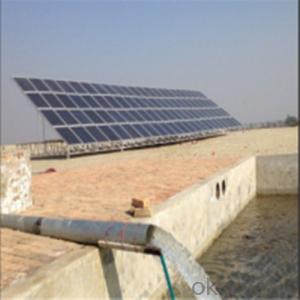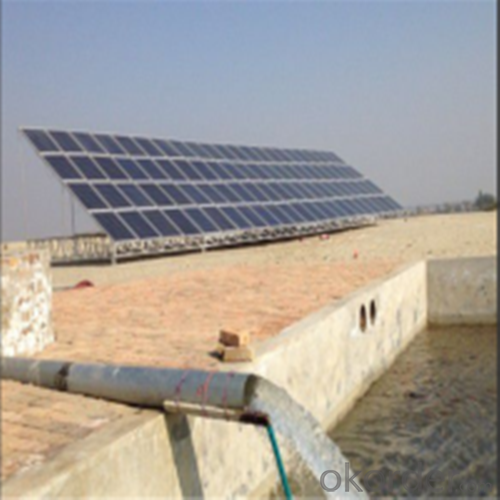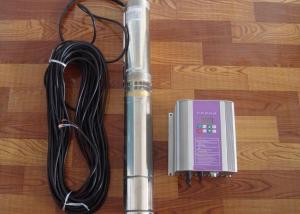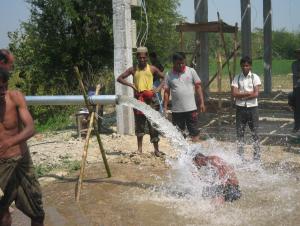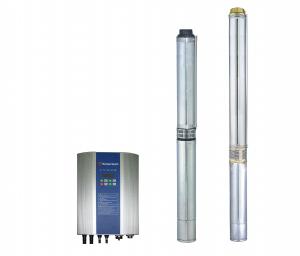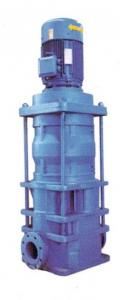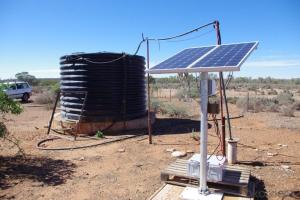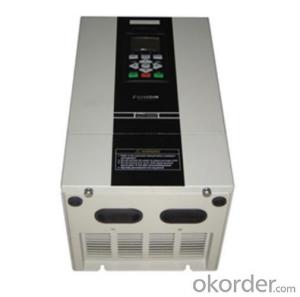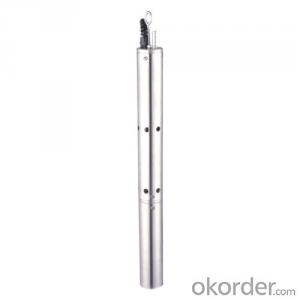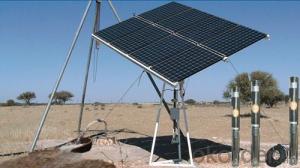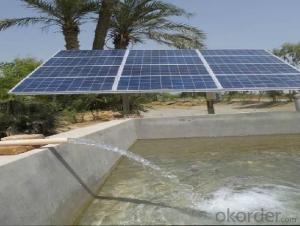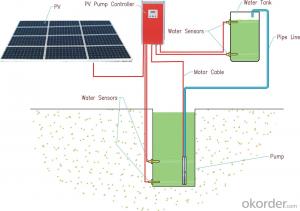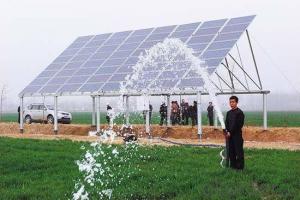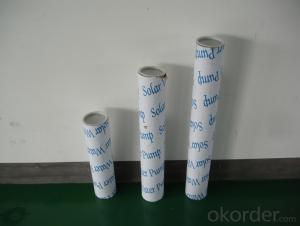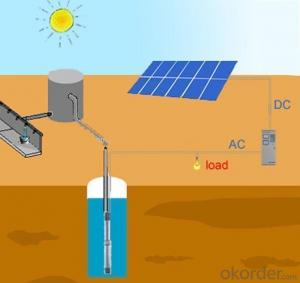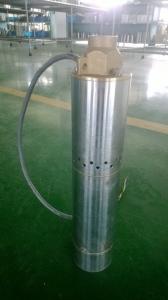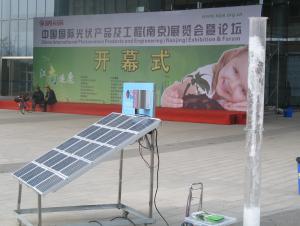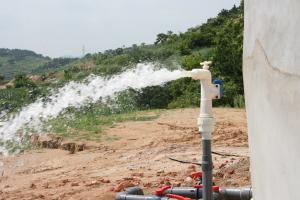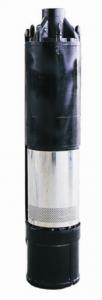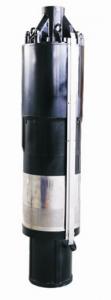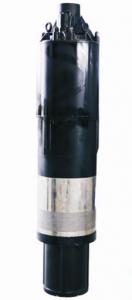Rain Barrel Solar Pump - Solar Powered Water Pump Solar Water Fountain
- Loading Port:
- Shanghai
- Payment Terms:
- TT OR LC
- Min Order Qty:
- 1 set
- Supply Capability:
- 1000 set/month
OKorder Service Pledge
OKorder Financial Service
You Might Also Like
solar water pump
DC solar water pumping system consists of the motor, pump, controller, solar array and some other accessories, such as water level sensor, float switch, etc. Considered that storing water is more efficient than storing electricity, the system is designed to directly drive the pump without battery which can reduce the construction and operating cost and routine maintenance effectively.The PV array consists of multiple solar panels connected in series/parallel, which can supply the whole system as power source by converting the absorbed solar radiation energy to the electrical energy. The pump driven by a brushless DC permanent magnet motor draws water from deep-well or river. The pumped water is then fed into reservoir or water tank, or connected to the irrigation system or fountain system directly.
Advanced Technology
Applications Innovation
The efficiency of DC brushless permanent magnet motor has been increased up to 25% in comparison with traditional asynchronous motor.
Technology Innovation
Stator and rotor are sealed by environment friendly casting resin.Motor insulation resistance can be hold higher than 300MΩfor more than 10 years, which consumedly increased the security and reliability of the submersible motor.
Structure Innovation
Casting resign technology processed stator and rotor as well as the water lubricated bearing make the submersible pump environment friendly.
Feature
High Efficiency & High Reliability
DC Brushless Permanent Magnet Motor
Minimum Maintenance, long Service Life
Environment Friendly Materials, Lubricated Without Oil
Application
Village or Family Water Supply
Animal Drinking Water & Livestock Watering
Garden/Courtyard Irrigation
Swimming Pool
Water Supply for Bivouac or Camping Car
Water Supply for Remote Area
Automatic Control
Operate Automatically, No Need Watching
Maximum Power Point Tracking (MPPT)
Dry-run Protection
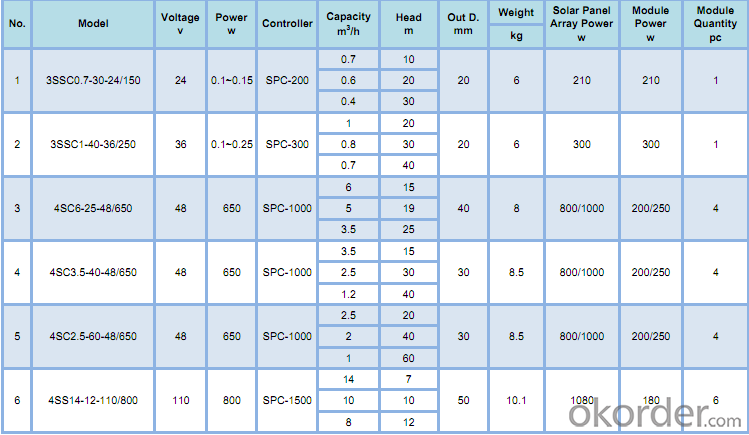
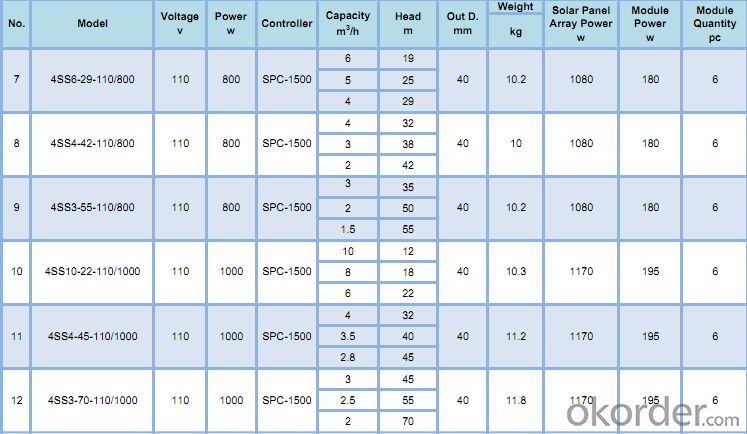
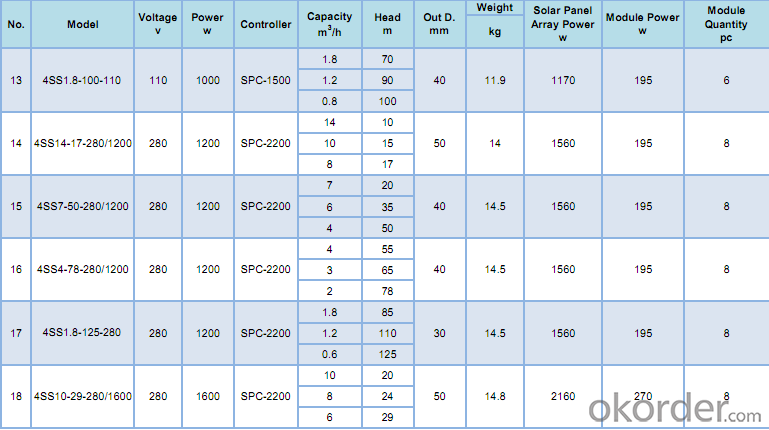
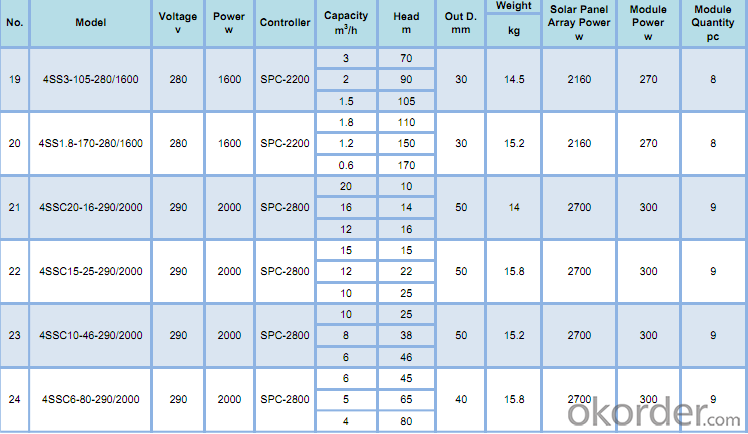
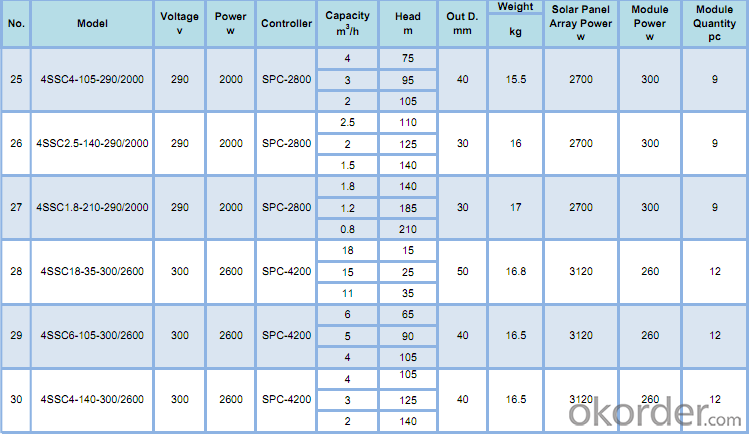
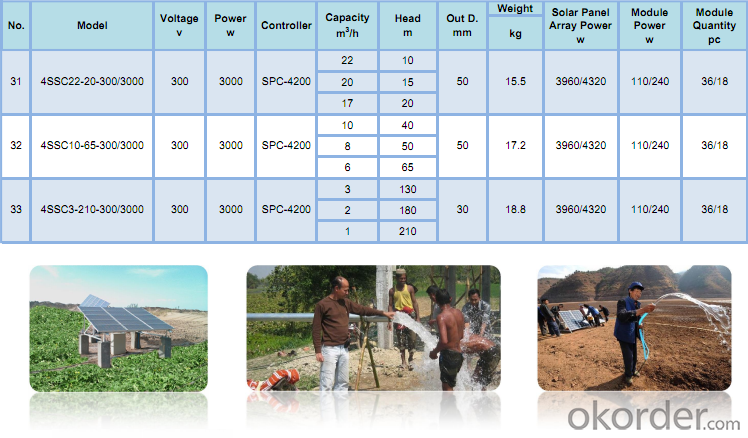
- Q: How does a solar pump help in reducing the use of irrigation water?
- A solar pump helps in reducing the use of irrigation water by using solar energy to power the pump, eliminating the need for electricity or fuel. This makes it a sustainable and cost-effective solution for farmers and agricultural practices. Additionally, solar pumps can be set up in remote areas without access to electricity, enabling efficient irrigation and reducing dependence on traditional irrigation methods that consume more water.
- Q: Can solar pumps be used for firefighting purposes?
- Yes, solar pumps can be used for firefighting purposes. They are capable of providing water supply to fire hoses and can be an effective and sustainable solution in remote areas where access to electricity may be limited. Solar-powered pumps are often used during wildfires or in areas with unreliable power grids, offering a reliable and eco-friendly alternative for firefighting operations.
- Q: How does a solar pump handle water source depletion or drought conditions?
- A solar pump does not have the ability to handle water source depletion or drought conditions on its own. However, certain measures can be taken to mitigate the impact of these conditions. For example, the pump can be connected to a water storage tank or reservoir, allowing excess water to be stored during periods of abundance and used during times of scarcity. Additionally, implementing efficient water management practices such as drip irrigation or rainwater harvesting can help conserve and optimize the use of water resources.
- Q: How does a solar pump help in maintaining water quality?
- A solar pump helps in maintaining water quality by providing a reliable and sustainable source of energy to operate water treatment systems. It allows for efficient water circulation, aeration, and filtration, which are essential for preventing the growth of harmful bacteria, algae, and other contaminants. Additionally, solar pumps reduce dependence on fossil fuels and minimize pollution, ensuring cleaner and healthier water sources.
- Q: Are there any safety measures or precautions to consider when using a solar pump?
- Yes, there are several safety measures and precautions to consider when using a solar pump. 1. Electrical Safety: Ensure that the solar panel and the pump's electrical components are properly installed and grounded to avoid electric shocks. It is crucial to follow the manufacturer's instructions and guidelines. 2. Overheating Protection: Solar pumps may generate heat during operation, especially in direct sunlight. To prevent overheating, it is important to provide proper ventilation and shading for the pump components. 3. Maintenance and Inspection: Regularly inspect and maintain the solar pump system to ensure its proper functioning and identify any potential issues. Check for loose connections, damaged cables, or any signs of wear and tear that may pose a safety risk. 4. Water Contamination: It is essential to prevent water contamination, especially if the solar pump is used for drinking water or irrigation purposes. Ensure that the water source is clean and free from pollutants. Regularly clean and disinfect the pump and its components as per the manufacturer's recommendations. 5. Installation and Mounting: When installing the solar panel, ensure it is securely mounted in a suitable location, following proper safety protocols. Avoid installing the solar panel in areas prone to high winds, flooding, or other potential hazards. 6. Protection from Extreme Weather: In regions with extreme weather conditions like hurricanes or heavy snowfall, it is important to take precautions to protect the solar pump system. This may include installing protective covers or shelters to shield the equipment from damage. Always consult the manufacturer's guidelines and consult with professionals if necessary to ensure proper installation, operation, and safety of the solar pump system.
- Q: How does the cost of operating a solar pump compare to a traditional electric pump?
- The cost of operating a solar pump is generally lower compared to a traditional electric pump. Solar pumps utilize energy from the sun, eliminating the need for electricity from the grid, thus reducing operating costs. Solar pumps also have lower maintenance needs since they have fewer moving parts compared to electric pumps. Additionally, solar pumps are not affected by fluctuating electricity prices, making them a more cost-effective and sustainable option in the long run.
- Q: Can a solar pump be used in areas with high levels of radon in the water?
- No, a solar pump cannot be used in areas with high levels of radon in the water. Radon is a radioactive gas that can be harmful to human health if ingested or inhaled. Solar pumps are designed to extract water from underground sources, and if the water contains high levels of radon, it poses a significant health risk. Therefore, alternative water extraction methods should be considered in such areas to ensure safe and healthy water supply.
- Q: Are there any maintenance requirements for a solar pump?
- Yes, there are some maintenance requirements for a solar pump. Regular cleaning of the solar panels to remove dust and debris is necessary to ensure optimal performance. Additionally, checking the connections, cables, and battery levels periodically is important to identify any issues or faults. It is also recommended to inspect the pump for any signs of damage or wear and tear. Overall, timely and routine maintenance is essential to prolong the lifespan and efficiency of a solar pump.
- Q: Are there any noise restrictions for installing a solar pump in residential areas?
- Noise restrictions may apply when installing a solar pump in residential areas. The precise limitations can differ based on the regulations and guidelines established by the municipality or homeowners' association. These restrictions aim to maintain the tranquility of the residential neighborhood by preventing any disturbance caused by the noise generated by the solar pump. It is recommended to consult local authorities or relevant governing bodies to ascertain the specific noise restrictions that must be adhered to when installing a solar pump in a residential area.
- Q: Are solar pumps suitable for use in amusement parks?
- Yes, solar pumps are suitable for use in amusement parks. They are cost-effective, environmentally friendly, and can provide a reliable source of water for various attractions such as water rides, fountains, and decorative features. Additionally, solar pumps require minimal maintenance and can be easily integrated into existing infrastructure, making them a practical choice for amusement parks seeking sustainable and efficient water management solutions.
Send your message to us
Rain Barrel Solar Pump - Solar Powered Water Pump Solar Water Fountain
- Loading Port:
- Shanghai
- Payment Terms:
- TT OR LC
- Min Order Qty:
- 1 set
- Supply Capability:
- 1000 set/month
OKorder Service Pledge
OKorder Financial Service
Similar products
Hot products
Hot Searches
Related keywords
